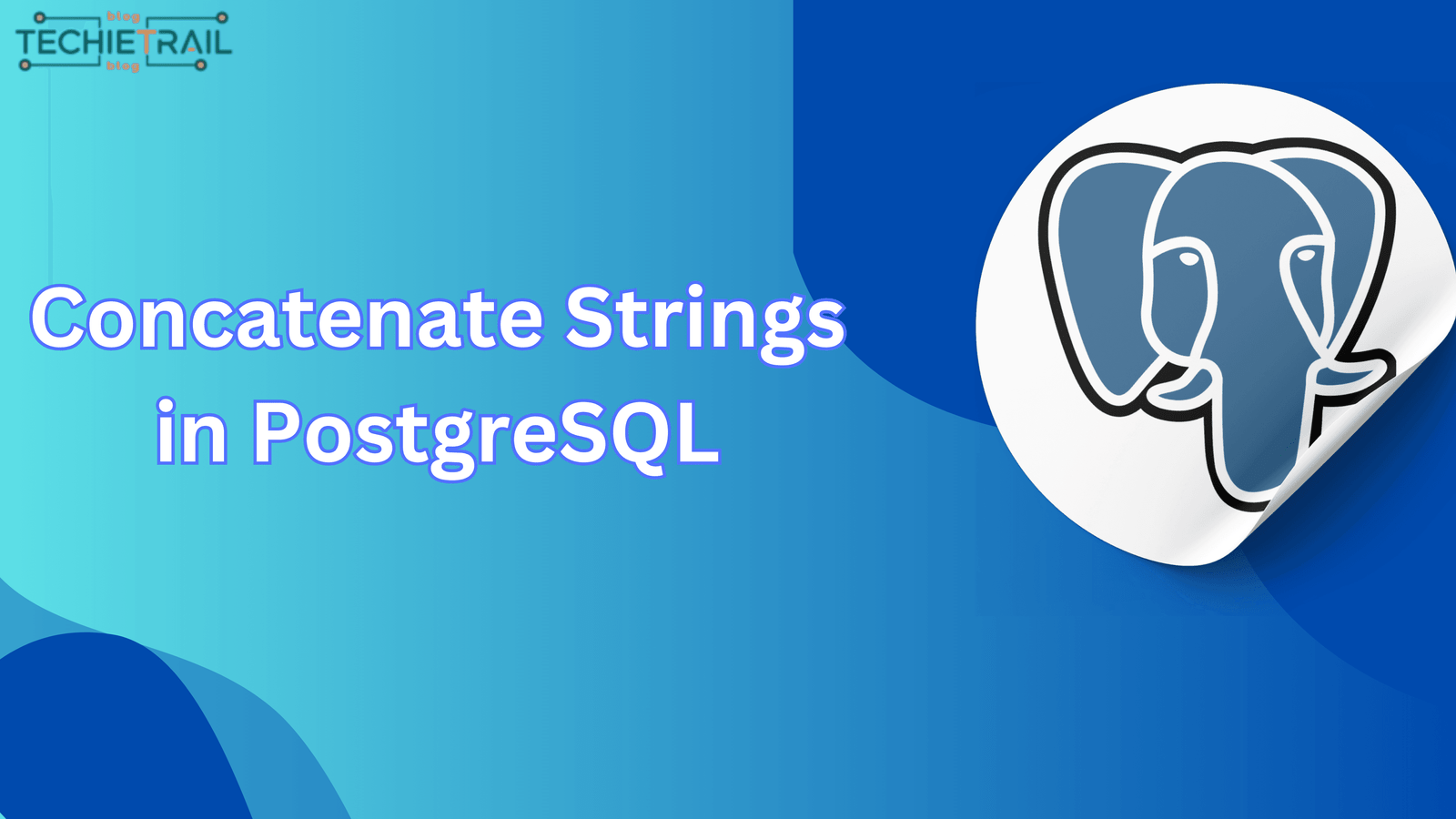In today’s fast-paced tech industry, mastering database management systems is crucial for career growth. PostgreSQL, a powerful open-source relational database, has become increasingly popular among organizations of all sizes. As demand for PostgreSQL experts rises, so does the competition for coveted positions in this field.
Are you prepared to face challenging PostgreSQL interview questions? Whether you’re a fresh graduate or a seasoned professional, the ability to confidently answer these questions can make or break your chances of landing your dream job. This comprehensive guide will equip you with the knowledge and confidence needed to ace your PostgreSQL interview, covering questions tailored for freshers, intermediate professionals, and advanced experts.
PostgreSQL Interview Questions for Freshers
A. What is PostgreSQL?
PostgreSQL is an open-source, advanced object-relational database management system (ORDBMS). It supports both SQL and JSON querying and is known for its reliability, feature robustness, and performance.
B. Methods to Create a New Database
PostgreSQL provides two main methods to create a new database:
- Using the command-line tool
createdb - Executing the SQL command
CREATE DATABASE
C. Schema in PostgreSQL
A schema is a namespace that contains named database objects such as tables, views, indexes, and functions. It helps organize database objects and allows multiple users to use one database without interfering with each other.
D. Join in PostgreSQL
A join combines rows from two or more tables based on a related column between them. PostgreSQL supports various types of joins, including INNER, LEFT, RIGHT, and FULL OUTER joins.
E. Constraint in PostgreSQL
Constraints are rules enforced on data columns in tables to ensure data integrity. Common constraints include:
- NOT NULL
- UNIQUE
- PRIMARY KEY
- FOREIGN KEY
- CHECK
F. PostgreSQL Operators
PostgreSQL supports various operators:
| Operator Type | Examples |
|---|---|
| Arithmetic | +, -, *, / |
| Comparison | =, <>, <, >, <=, >= |
| Logical | AND, OR, NOT |
| String | LIKE, ILIKE, |
G. Primary Key vs Foreign Key
- Primary Key: Uniquely identifies a record in a table
- Foreign Key: References a primary key in another table, establishing a link between tables
H. Primary Constraints in PostgreSQL
- PRIMARY KEY
- UNIQUE
- NOT NULL
- CHECK
- FOREIGN KEY
I. Types of Joins in PostgreSQL
- INNER JOIN
- LEFT (OUTER) JOIN
- RIGHT (OUTER) JOIN
- FULL (OUTER) JOIN
- CROSS JOIN
J. View in PostgreSQL
A view is a virtual table based on the result of a SELECT query. It doesn’t store data but provides a way to encapsulate complex queries and present data in a simplified manner.
PostgreSQL Interview Questions for Intermediate Professionals
A. What does a Cluster index do?
A cluster index physically reorders table data based on the index key. It improves query performance by reducing disk I/O for range queries and joins.
B. Disadvantage of DROP TABLE command
The DROP TABLE command permanently deletes the table and all its data, making recovery difficult. It’s irreversible without proper backups.
C. Rapid way to remove all rows in a huge table
The TRUNCATE command is the fastest way to remove all rows from a large table. It’s more efficient than DELETE as it doesn’t generate individual row deletion events.
D. Deleting a table and related objects
Use CASCADE option with DROP TABLE:
DROP TABLE table_name CASCADE;
This removes the table and all dependent objects like views, functions, and triggers.
E. When to use “EXPLAIN ANALYZE”
Use EXPLAIN ANALYZE to:
- Analyze query execution plans
- Identify performance bottlenecks
- Optimize slow queries
It provides actual execution times and row counts.
F. Use of “pg_dump” method
pg_dump is used for:
- Creating logical backups of databases
- Migrating data between PostgreSQL versions
- Transferring databases between servers
| Feature | Description |
|---|---|
| Format | Plain text, custom, directory, or tar |
| Scope | Entire database or specific objects |
| Compression | Supports compressed output |
G. Maximum table size in PostgreSQL
PostgreSQL table size limits:
- 32 TB on most filesystems
- Unlimited on certain filesystems (e.g., ZFS)
H. Creating an Index in PostgreSQL
Basic syntax:
CREATE INDEX index_name ON table_name (column_name);
Types of indexes:
- B-tree (default)
- Default index type in PostgreSQL.
- Best suited for equality (
=) and range (<,<=,>,>=) queries. - Example:
CREATE INDEX idx_name ON table_name(column_name); - Hash
- Ideal for equality comparisons only (
=). - Less commonly used compared to B-Tree.
- Example:
- Ideal for equality comparisons only (
CREATE INDEX idx_name ON table_name USING HASH(column_name); - GIN (Generalized Inverted Index)
- Used for indexing array values, JSONB, and full-text search.
- Efficient for containment queries (
@>or<@). - Example:
CREATE INDEX idx_name ON table_name USING GIN(column_name); - GiST (Generalized Search Tree)
- Supports a wide variety of query types, such as range queries and geometric data types.
- Commonly used for spatial and text search.
- Example:
CREATE INDEX idx_name ON table_name USING GiST(column_name); - SP-GiST (Space-Partitioned GiST)
- Specially designed for partitioned data like geometric points or hierarchical structures.
- Efficient for certain spatial queries.
- Example:
CREATE INDEX idx_name ON table_name USING SPGIST(column_name); - BRIN (Block Range Index)
- Lightweight index suitable for very large datasets.
- Ideal for sequential data like timestamps.
- Example:
CREATE INDEX idx_name ON table_name USING BRIN(column_name);
I. Transaction properties (ACID)
- Atomicity
- Consistency
- Isolation
- Durability
Acronym: ACID
J. Commands to control transactions
- BEGIN or START TRANSACTION
- COMMIT
- ROLLBACK
- SAVEPOINT
- RELEASE SAVEPOINT
K. Handling concurrent updates
Techniques:
- Row-level locking
- Optimistic concurrency control
- MVCC (Multiversion Concurrency Control)
- Advisory locks
L. Performing bulk inserts
Methods:
- COPY command
- \copy meta-command (psql)
- Prepared statements
- Temporary tables + INSERT
M. Stored Procedures
Stored procedures are server-side routines that encapsulate complex logic, improve performance, and enhance security by reducing data transfer.
You can also refer : What is DATEDIFF in PostgreSQL
You can also refer : Top 20 ASP.NET interview questions and answers

PostgreSQL Interview Questions for Advanced Professionals
A. Full-text Search in PostgreSQL
Full-text search in PostgreSQL allows efficient searching of natural language documents. It uses tsvector for document representation and tsquery for queries.
B. Data Migration in PostgreSQL
Data migration can be performed using:
- pg_dump and pg_restore
- COPY command
- Foreign Data Wrappers
C. Regular Views vs. Materialized Views
| Feature | Regular Views | Materialized Views |
|---|---|---|
| Storage | Not stored | Stored on disk |
| Update | Real-time | Manual refresh |
| Performance | Slower for complex queries | Faster for complex queries |
D. Logical Replication in PostgreSQL
Logical replication uses publish/subscribe model:
- Create publication on primary
- Create subscription on secondary
- Configure wal_level = logical
E. Parallel Query Execution
Parallel query execution:
- Set max_parallel_workers
- Use PARALLEL clause in queries
- Ensure parallel_setup_cost is appropriate
F. pg_stat_activity View
pg_stat_activity view provides information about:
- Current sessions
- Queries being executed
- Wait events
- Connection details
G. Recursive Queries
Recursive queries in PostgreSQL use WITH RECURSIVE clause to traverse hierarchical or tree-structured data.
H. PostgreSQL vs. SQL
PostgreSQL extends standard SQL with:
- Advanced data types
- Full-text search
- Geospatial support
- JSON/JSONB support
I. Tablespaces in PostgreSQL
Tablespaces allow database objects to be stored in different physical locations, improving performance and manageability.
J. User-defined Functions
User-defined functions can be created using:
- CREATE FUNCTION statement
- Various languages (PL/pgSQL, PL/Python, etc.)
- RETURNS clause for output
K. pg_stat_replication View
pg_stat_replication view provides information about:
- Replication status
- Lag time
- Sent and written WAL locations
L. Sharding Implementation
Sharding can be implemented using:
- Table partitioning
- Foreign Data Wrappers
- Application-level sharding
M. Row-level Security
Row-level security is implemented using:
- CREATE POLICY statement
- ALTER TABLE … ENABLE ROW LEVEL SECURITY
- GRANT/REVOKE permissions
N. Data Encryption
Data encryption in PostgreSQL:
- pgcrypto extension for column-level encryption
- SSL for network encryption
- Filesystem-level encryption for data at rest
O. Concurrent Transaction Phenomena
Three phenomena to prevent:
- Dirty reads
- Non-repeatable reads
- Phantom reads
P. PostgreSQL vs. Oracle
Key differences:
- Open-source vs. proprietary
- PL/pgSQL vs. PL/SQL
- MVCC implementation
- Extensibility and custom data types

PostgreSQL’s versatility and robust feature set make it a popular choice for database management, and professionals at all levels should be prepared to showcase their knowledge during interviews. From fundamental concepts for freshers to advanced topics for seasoned professionals, a comprehensive understanding of PostgreSQL is crucial for success in the field.
As the database landscape continues to evolve, staying current with PostgreSQL’s latest features and best practices is essential. Whether you’re a newcomer or an experienced professional, continuous learning and hands-on experience will be key to excelling in PostgreSQL-related roles. By mastering the concepts covered in these interview questions, candidates can confidently demonstrate their expertise and secure rewarding opportunities in the ever-growing world of database management.




